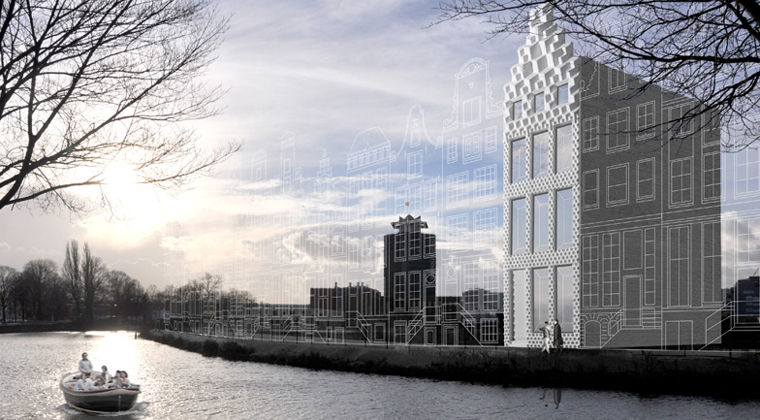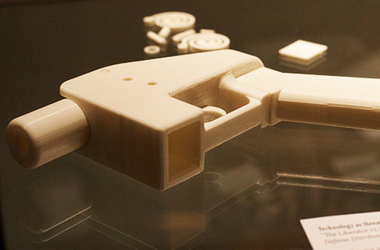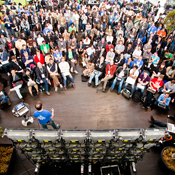
Agriculture was replaced by industry a long time ago. Currently it is time of reconceiving the industry. New technologies grow and arborize on the stem of the old inventions and discoveries. Playing God is easy if you are free to create and destroy in the comfort of your own home. So what is the future perspective of this young technology?
What is 3D?
Three-dimensional (3D) printers appeared as the part of the additive technology back in the 1983. They have gained their name as additive mechanisms because of printing an object layer by layer, i.e. adding. Computer-programmed movement of the nozzle creates unique shapes and textures with the thin layers of the heated material, aka 3D ink.
3D Printers’ delicious ink.
This 3D ink can be anything, starting with plastic and finishing with chocolate. For some specific 3D printing companies the range of the materials is strictly limited, but mostly it is plastic.
3D ink can be anything, starting with plastic and finishing with chocolate.
Especially, if we talk about the most recent desktop versions of the 3D printers, available in retail at a reasonable price. These peculiar small constructions that look like kitchen appliances “cook” all kinds of things and have brought 3D printing to another level – the level of the massive hype.
Two brunches of the new technology.

We need to understand from the very beginning that there are two main spheres of 3D printing. These are large industrial printers used for automobile manufacturing, for example, and relatively small consumer printers that use basically the same principle and technology, but still are comprehended differently thanks to their different target audiences.
We consider the future of the large industrial 3D printers being very bright with no doubt. Industrial use already represents the bulk in 3D printing being applied for automobile building, design and building. As for the small private desktop 3D printers there are not such clear perspectives. The comparison of several advantages and disadvantages will help us decide upon the future of these new devices.
I’m plastic and not that fantastic.

3D printing nowadays relies deeply on the plastics that is not very ecologically friendly. We all know what a great problem plastic wastes are particularly for the animals and birds. The period of decomposition of the plastic goods is about 200 years and involves pollution of both soil and air. The biodegradable materials like wood and organic materials are much better for printing, but this kind of raw materials is still in the process exploration and is not that widespread. During the procedure of printing itself the heated nozzle of the device melts plastic and this causes the emission of the secondary fumes. All these conditions certainly do not influence the environment favorably, nor do all other industries that use plastics, aluminum and glass.
Even though, the most of 3D prints are made of plastic, there is still a silver lining to it, because such products are easier to recycle. Most modern products include wood, metal, plastic and fabric all in one, and that makes it more difficult to separate these materials for further processing. However, soon enough the printers are promised to be able to print with different materials.
Environmentalists, heads up!

Green value of such a processes is also characterized by the absence of transportation pollution with exhaust fumes. Less crude materials that are necessary for the printing due to the layering make it possible to avoid drilling and cutting that are vital for the already existing manufacturing procedures. The evolution of this process might be tracked with an example. First, the figurines of people were made by hand carving, then the machines took over by drilling the figures according to the program; nowadays it is possible to create the realistic “mini-you” after taking some pictures and only polishing the printed object. The quality of depicting is pretty obvious too.
Time is money. How fast can I print it?

The timeline of creating an architectural model, for instance, becomes shorter and shorter. If it was 2 months for creating the mini printed model of the house earlier, now it can take the architects only 2 weeks and the project is ready. Successful prototyping of any product, detail or even the whole process will help connecting the idea with the customer through visualization.
Even though 3D printers’ manufacturers will assure you that the innovative printing takes much less time and be honest, you still need to understand that you do not get the ready product like a miracle in a couple of seconds. The process of 3D layering is still quite lengthy and requires about 7 hours, depending on the size and complexity, of course. Energy inefficiency during this process is rarely mentioned, but the 3D printer requires at least 50% more energy compared to the traditional manufacturing. Be ready to meet some failures and inaccuracies during the printing process. Surely, everybody has seen jammed paper and pages spoiled with smudges of ink. What makes you think that the young 3D printer is somehow different?
Money is time. How much does it cost?

Nonetheless, having one 3D model done you may produce multiple copies. Let’s say, you have a 3D model of an IPhone case (now available for the free download on the web). You just need to change the color and maybe slightly the texture as you wish. Moreover, the cost is lower in this case, because one does not have to splash out for another model from a designer. Some IPhone covers (depends on the detailing, material and type) will cost you less than a dollar.
Manufacturing the whole lot of the products and then delivering it to the buyer is a pricy process, and 3D appears a perfect variant for the retail use. If a person needs only one pair of fashionable shoes in a special size or design and form they are easily printed in the quantity of one pair. Imagine that in manufacturing. Seems like a marvelous solution to a surplus production of a consumer society where lots of products not fashionable anymore are left outboard and end up in the trash bin.
Lower cost may wake up a “shopaholic” or better say “printaholic” in anyone. It is a proven fact that lots of modern people are consumers with a big thirst for accumulation. If you can print anything, why not a lot? Economic waste might not become a global phenomenon in this case, but is still going to throw a shadow on the reputation of the new technology.
Grey territory.
Officially, it is not forbidden by law to print weapon parts at home.
This is not the only abusive way of 3D printing usage. Perhaps, even the most innocent one. Certainly so, comparing to the at home production of weapons and bongs. Officially, it is not forbidden by law to print weapon parts at home. Quite disturbing, especially knowing that there are people who are ready to share the blueprint for free just to make sure everybody has a firearm.

Speaking of other industries 3D printing may affect greatly lots of them. Food, Fashion, Medicine, Military, Automobiles and Entertainment are already experiencing the big impact of the new technology. Many specialist are likely to abandon the old methods and apply the modern ones. For example, jewelry production can benefit greatly from using both printed models and casting forms that are cheaper and easier to produce.
As soon as the 3D printers start printing cotton lots of factories in China will have to lay off most of their employees, because even if they install 3D printers in Bangladesh there are less people needed to assist the process. To be honest, there is actually no such product that can only be made through additive manufacturing. It means that the parties concerned should invent and bring to life something unique in the nearest future. Medical sphere appears to be very promising in this matter. 3D printed functional body organs and implants as well as human tissues represent science fiction right now, but certainly seem realistic with the fast growing tempo of the bio ink.
Stock market estimations.

The high level of controversy accompanies every single pioneering technology. It is so with 3D printing as well. Stock Market news of Seeking Alpha had a pessimistic prognosis that has recently become true. The leader company in 3D printing – 3D Systems have lost more than 50 % of their stocks rate. The fall was predictable and conditioned upon several reasons including high competition and the overall market pullback. However, the expert say that the situation might change in the nearest future and reach sky-high limits, bringing billions of dollars.
Revolutionary technology might be dependent on the money and peoples’ opinions, but not completely. Especially if the technology has seen the light of the day with such a big success. You may create your own very unique objects and only your ambitions and the size of the printer are the limit. It could be anything, like a small cute earring or pushing the envelope with printing the whole houses and Moon stations.
3D printing really represents numerous great opportunities, but at the same time it represents unstable and somewhat insecure technology. Perhaps, 3D printing is just another invention like Guidant’s pace-maker that ruined the company because of closed-circuit faults and deaths. Considering these highly contradictory facts one really has to pounder over the personal opinion about the matter. What is your opinion as the matter of fact?





